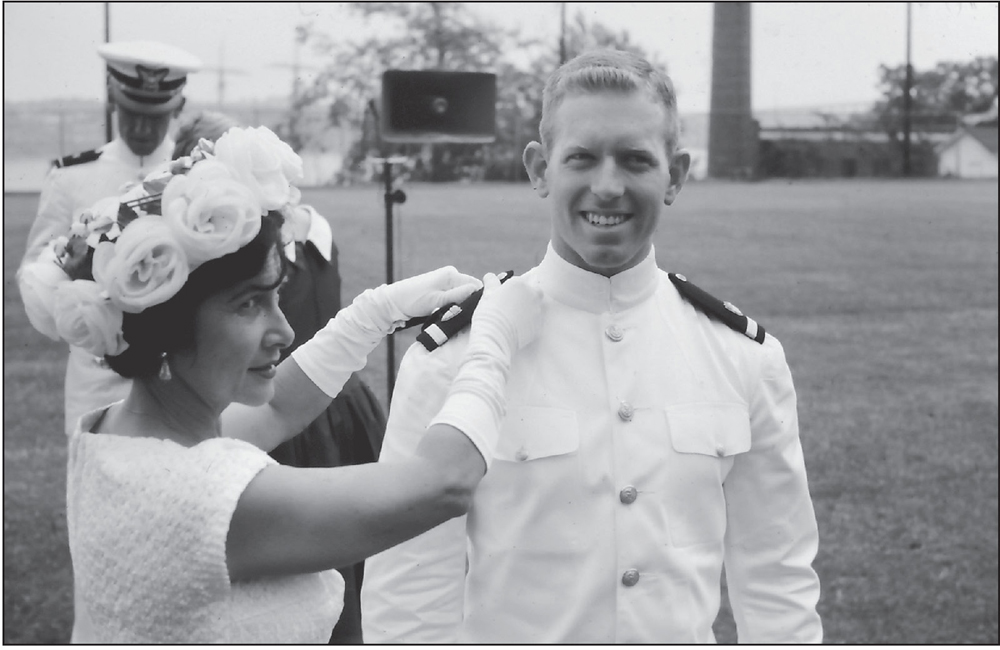
GRADUATION, 1963. Gold stripes and heavy responsibility are placed on the graduate’s shoulders. Steve Ulmer (1963) has his ensign shoulder boards attached by his mother. Two years after this happy time, he was at war. (Courtesy of Steve Ulmer.)
Eight
PREPARED
The first chapter emphasized the mission of the academy to:
Graduate young men and women of sound bodies, stout hearts and alert minds, with a liking for the sea and its lore and with that high sense of honor, loyalty and obedience which goes with trained initiative and leadership; well-grounded in seamanship, the sciences, and the humanities, and strong in the resolve to be worthy of the traditions of commissioned officers in the United States Coast Guard in the service of their country and humanity.
This could be summarized as “graduate officers prepared to effectively serve.” Admittedly, the author is biased, but he feels that the academy is doing a fine job.
The Coast Guard that modern graduates enter is much more complicated than in earlier years. It seems that if something occurs on the water, the Coast Guard is responsible for its safety and success. As the Arctic becomes more accessible due to global warming, the Coast Guard, as the principal federal presence and the only service with icebreakers, will face new challenges. The Jarvis Overland Rescue serves to remind people that the Arctic presents dangers for the unprepared.
The class of 2019 is unquestionably more prepared than the class of 1963 was when they graduated. Graduates in 2019 included 19 electrical engineering, 29 mechanical engineering, 32 civil engineering, 17 naval architecture and marine engineering, 31 marine and environmental sciences, 29 operations research and computer analysis, 38 management, and 50 government majors.
The world they face includes challenges the class of 1963 could only imagine. Global terrorism is a concern for all nations. More countries have nuclear capabilities. There are many more humans competing for the earth’s resources. The mix of potential problems will only increase.
Throughout nearly 150 years, US Coast Guard Academy graduates have had to be ready to step into challenging, complex, and critical situations in which they must be able to perform with competence. Now, they are entering positions of responsibility for the safety of mankind, efficient operation of maritime commerce, protection of the environment, and security of their nation. It is to the credit of the academy and its staff that they have always done just that. It is the alumni’s responsibility to see to it that they are Semper Paratus—Always Prepared.

GRADUATION, 1963. Gold stripes and heavy responsibility are placed on the graduate’s shoulders. Steve Ulmer (1963) has his ensign shoulder boards attached by his mother. Two years after this happy time, he was at war. (Courtesy of Steve Ulmer.)
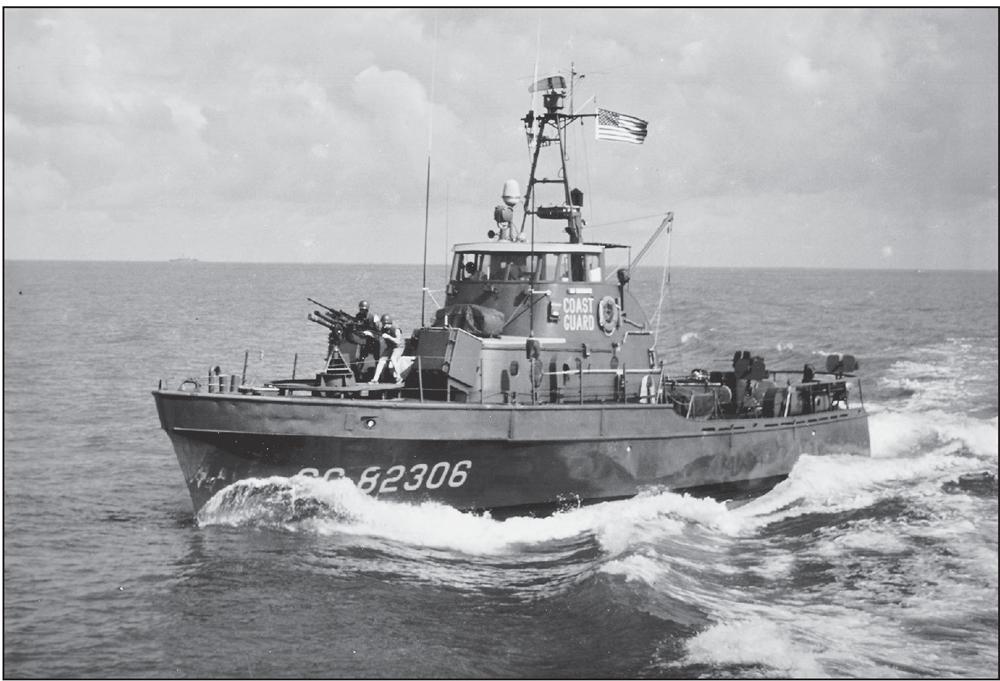
THE VIETNAM WAR. An 82-foot Coast Guard patrol boat is pictured in battle dress. Thirty-one members of the class of 1963 were serving in Vietnam within two years of their graduation. (Courtesy of Jim Furaus.)
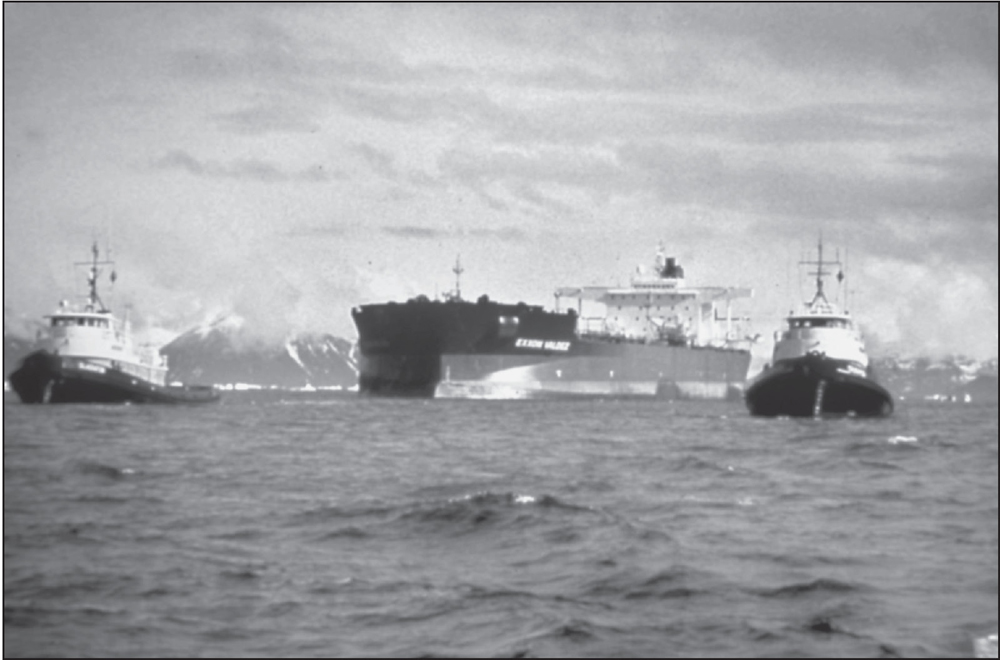
T/V EXXON VALDEZ OFF-LOADING OIL. The service, with its 11 different mission areas, presents the opportunity for challenges in many arenas. The grounding of the Exxon Valdez on March 24, 1989, which resulted in an ecological disaster in a pristine area of Alaska, is a worst-case scenario. The cleanup, which went on for three years, had the Coast Guard as the federal on scene commander (FOSC). Political pressure saw the responsibility for FOSC escalate from the captain of Port Valdez to the district commander and, finally, to the area commander, Vice Adm. Clyde Robbins, who was headquartered in Alameda, California. (Courtesy of US Coast Guard District 17.)
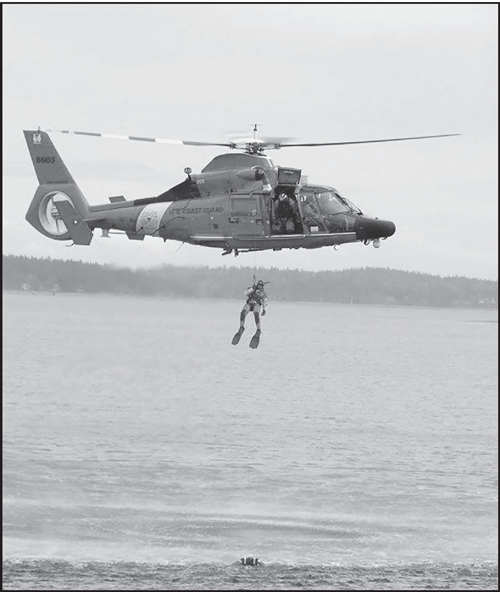
SEARCH AND RESCUE. Recent academy graduates are going directly to flight training with the Navy in Pensacola, Florida. Pictured is an HH-65 with a rescue swimmer. Helicopters with flight crews and swimmers from around the Coast Guard were detailed to New Orleans after Hurricane Katrina struck land there. There were over 1,800 total fatalities and property damage that totaled a record $125 billion. The service was ultimately credited with saving 33,000 lives. (Author’s collection.)
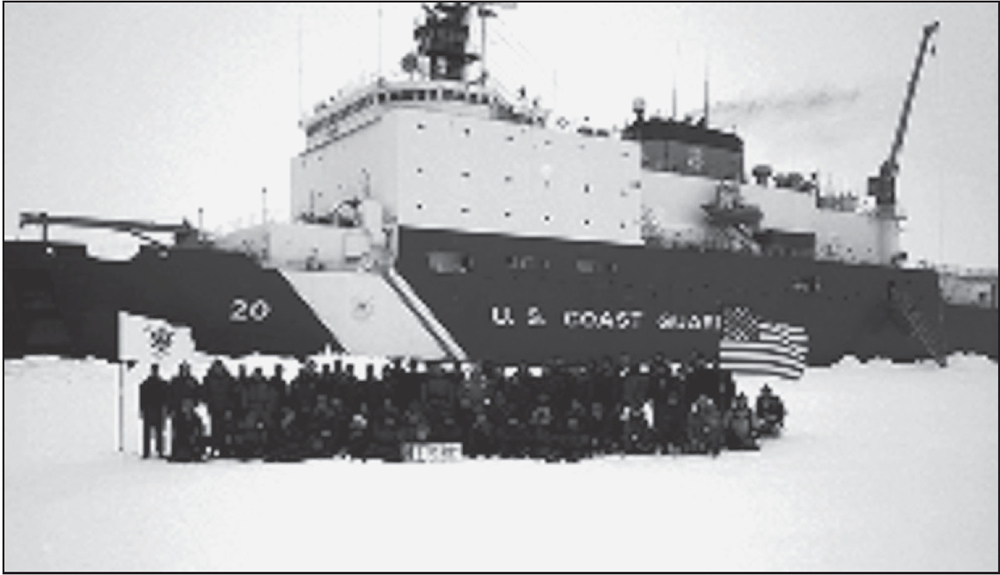
HEALY. The icebreaker Healy is shown at the North Pole. There is a critical need for additional icebreakers as activities in the Arctic increase. Many graduates will accordingly see icebreaker duty in their careers. Alaska, the “last frontier,” will become of more and more importance to the service and the nation. (Courtesy of USCGC Healy.)
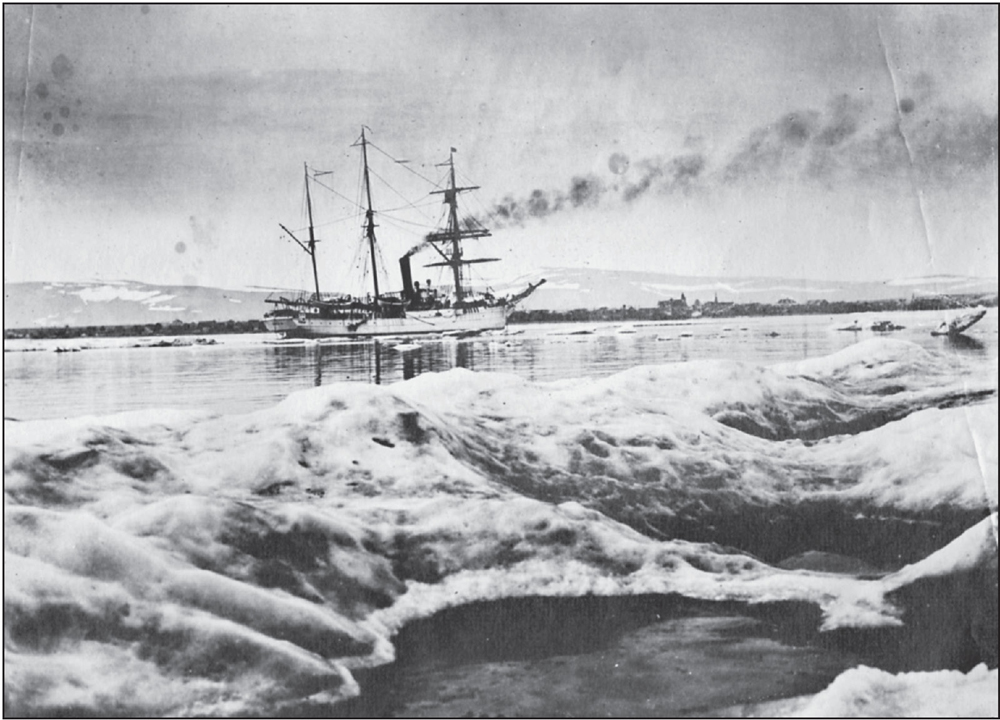
BEAR IN THE ICE. Despite climate change and a warming planet, ice will still come, and it will be unpredictable, moving with wind and current. Icebreakers will still be needed to work the Arctic and support the Antarctic. (Courtesy of University of Alaska–Fairbanks.)
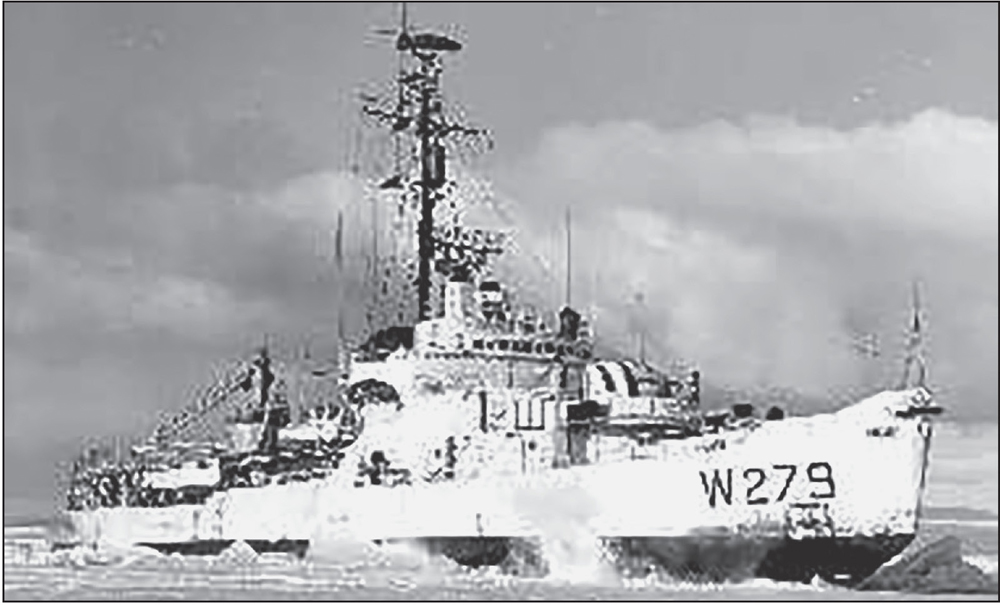
THE ICEBREAKER EASTWIND IN THE ICE. The seven Wind-class icebreakers, like the Eastwind, have all been decommissioned but will likely be replaced in the future. New ensigns can expect to have them as assignment potentials. (Courtesy of US Coast Guard Commandant Public Relations.)
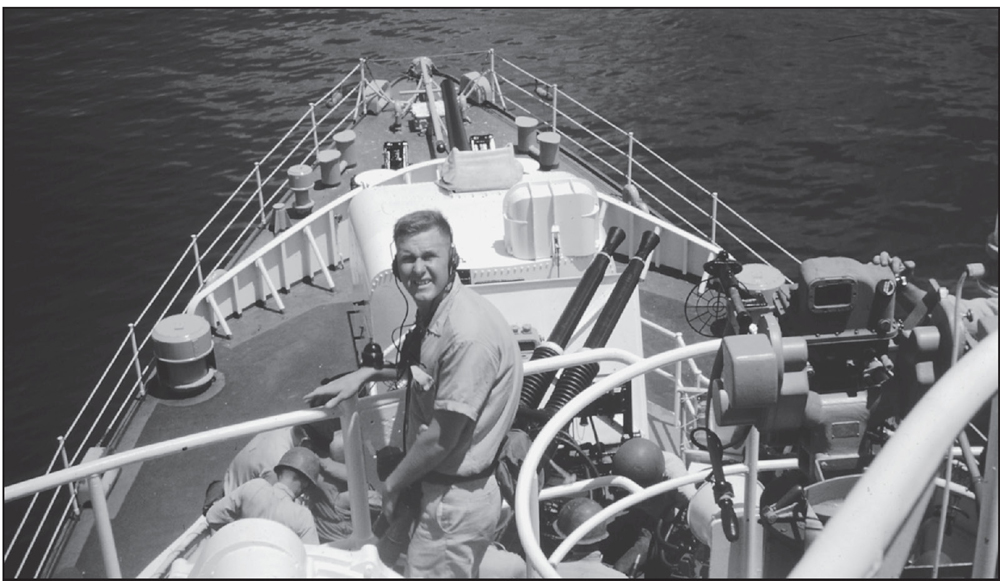
GUNNERY DRILL. Ens. Bob Kuhnle (class of 1963) is pictured on the 40-millimeter mount on the USCGC Pontchartrain on Ocean Station November. The majority of academy graduates are assigned to cutters. For the class of 1963, many of these afloat assignments were on ocean station vessels (OSV) at the midway point of transoceanic air routes. The jobs were typically gunnery officer, communications officer, or first lieutenant. Kuhnle eventually went to flight training and was selected as the outstanding flight student for 1966. He later earned a doctorate from Old Dominion University. (Author’s collection.)
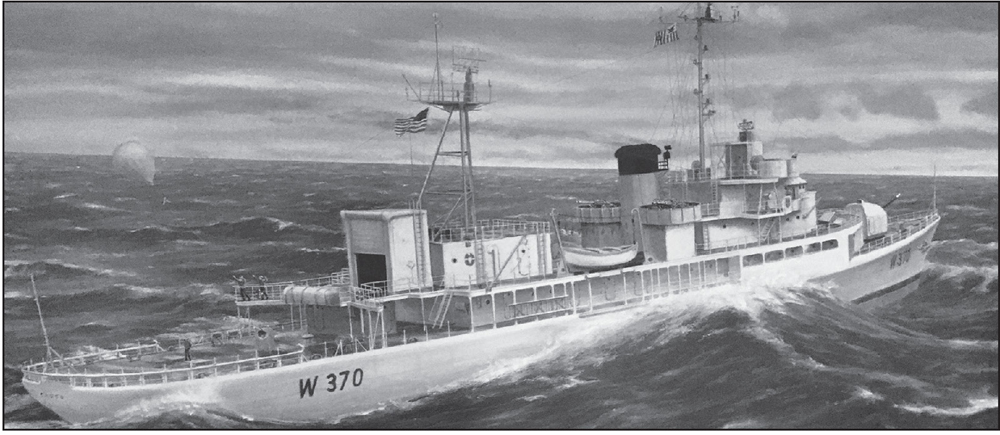
OCEAN STATION VESSEL. An OSV launches a weather balloon in this painting by Tony Falcone that is on display in the Alumni Center activity room. This painting shows the USCGC Casco on Ocean Station Bravo. From the 1950s into the 1970s, the Coast Guard manned four ocean stations in the Atlantic and two in the Pacific. In addition to taking weather observation, they were located on the midway point in oceanic routes as a safety measure. Two aircraft actually ditched, and passengers were saved by the OSVs. Many members of the class of 1963 were assigned to OSVs. Satellite weather data gathering and improvements in airplane safety eliminated the need for the OSV program in the 1970s. This painting was sponsored by the class of 1955. (Author’s collection.)
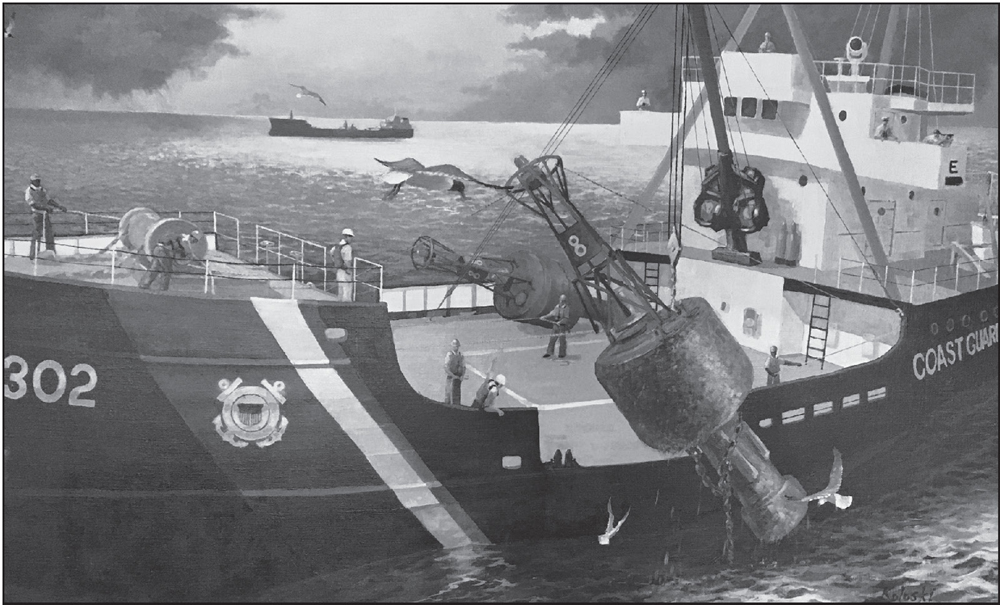
BUOY-TENDING OPERATIONS. This painting by Mike Koloski (class of 1965) is also in the Alumni Center activities room. The Coast Guard is responsible for maintaining 97,000 short-range aids to navigation, including beacons, buoys, lighthouses, ranges, and sound signals. The scope is extensive, with 25,000 miles of navigable waters and nearly 95,000 miles of coastline. Many graduates will report to the black hulls of the buoy tender fleet. When the class of 1963 graduated, these were considered plum assignments because of the opportunity for extensive ship-handling and small wardrooms. (Author’s collection.)
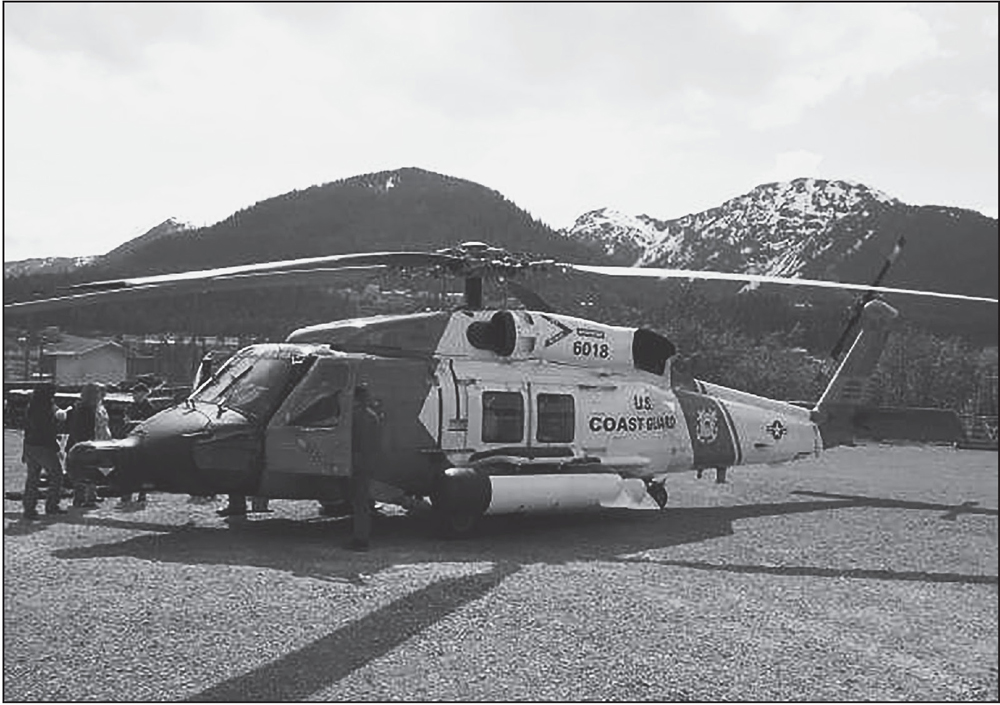
HH-60T JAYHAWK. The nickname for this helicopter is the “Big Iron.” The Coast Guard had 42 operational Jayhawks in 2020. Unlike in earlier classes, when all graduates were assigned afloat, recent graduates have been assigned directly to sectors, to other shore billets, and to flight training. All initial flight training is done with the Naval Education and Training Command in Pensacola, Florida. (Courtesy of the US Coast Guard.)
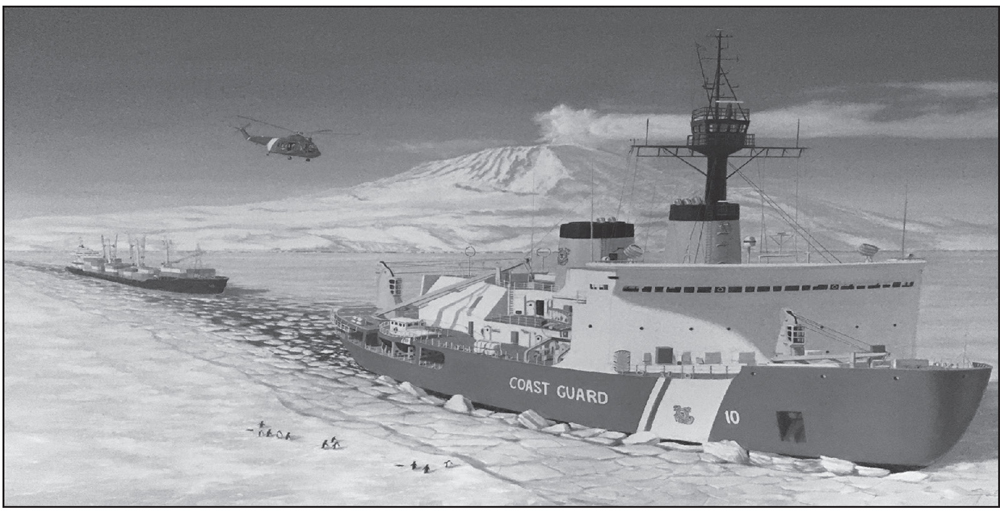
POLAR STAR IN ANTARCTICA. This mural by Tony Falcone is on display in the Alumni Center activities room and was sponsored by the class of 1955. The Polar Star is the Coast Guard’s only operational Polar-class icebreaker. Every year, the resupply of the research station at McMurdo Sound is a priority. Upcoming graduates of the academy can expect icebreaker assignments for the foreseeable future. (Author’s collection.)
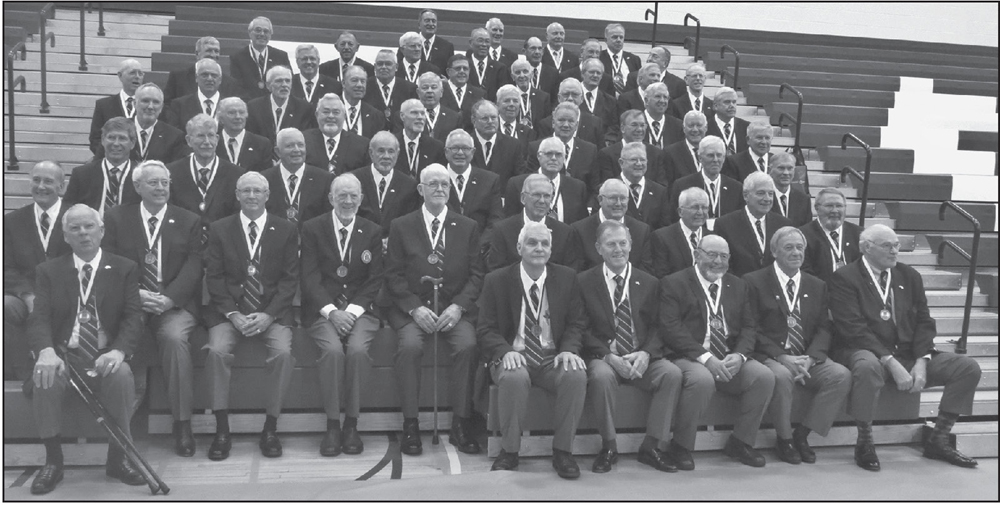
THE CLASS OF 1963 CELEBRATES THEIR 50TH REUNION. This picture was taken following the Medallion Ceremony. Classes form very tight bonds that continue throughout their lives. In this case, three-quarters of all living classmates who graduated in 1963 came back to the academy to receive 50-year medallions from the commandant, Adm. Robert Papp (class of 1975). This class was well prepared. The 93 graduates earned 104 master’s degrees and seven doctorates. Three made flag rank. The class commanded 129 units afloat and ashore. Ten became lawyers, two became ordained ministers, and seventeen earned wings. Thirty-one went to Vietnam, earning 14 Bronze Stars and 3 Silver Stars among them. (Author’s collection.)
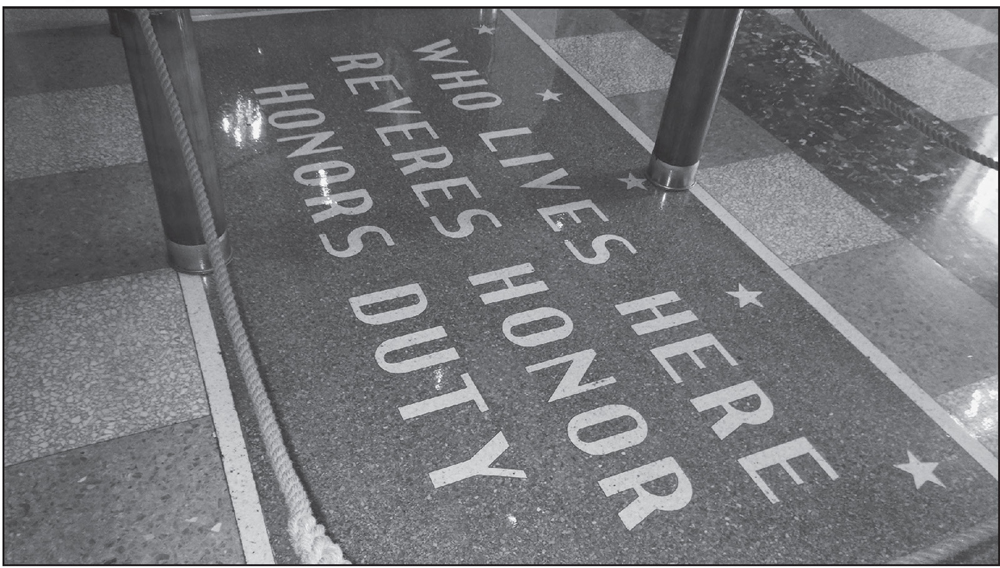
PLAQUE AT ENTRANCE TO CHASE HALL. Graduates are prepared to enter the Long Blue Line with this motto foremost in their mind. From their first entry into the academy through the end of their four years, they have lived this motto. According to the words of welcome in The Running Lights, “The Academy is an intense crucible designed to break down, purify, and re-forge your class into the best version of itself. Rely on your shipmates, and look to them for strength, for you cannot succeed without them.” (Author’s collection.)
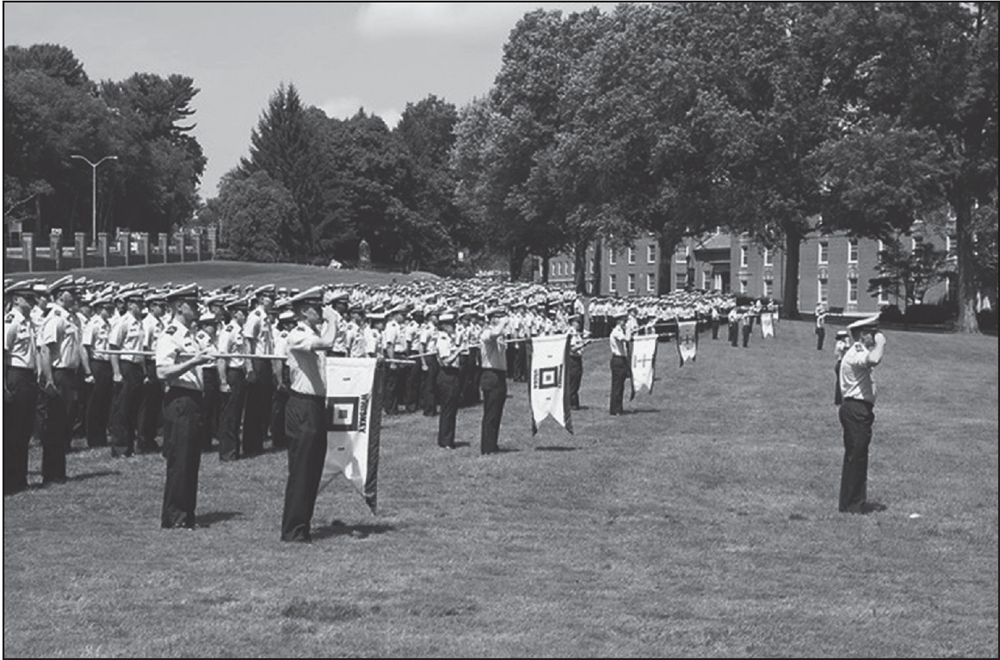
FOURTH CLASS SHOULDER BOARD CEREMONY. It is a long, hard road to this ceremony signifying the transition from swab to fourth class to the ensign shoulder boards at graduation. As The Running Lights states: “Every member of the Long Blue Line has stared into the eyes of service and sacrifice and has not blinked. Will you?” (Courtesy of Paul Duddy.)
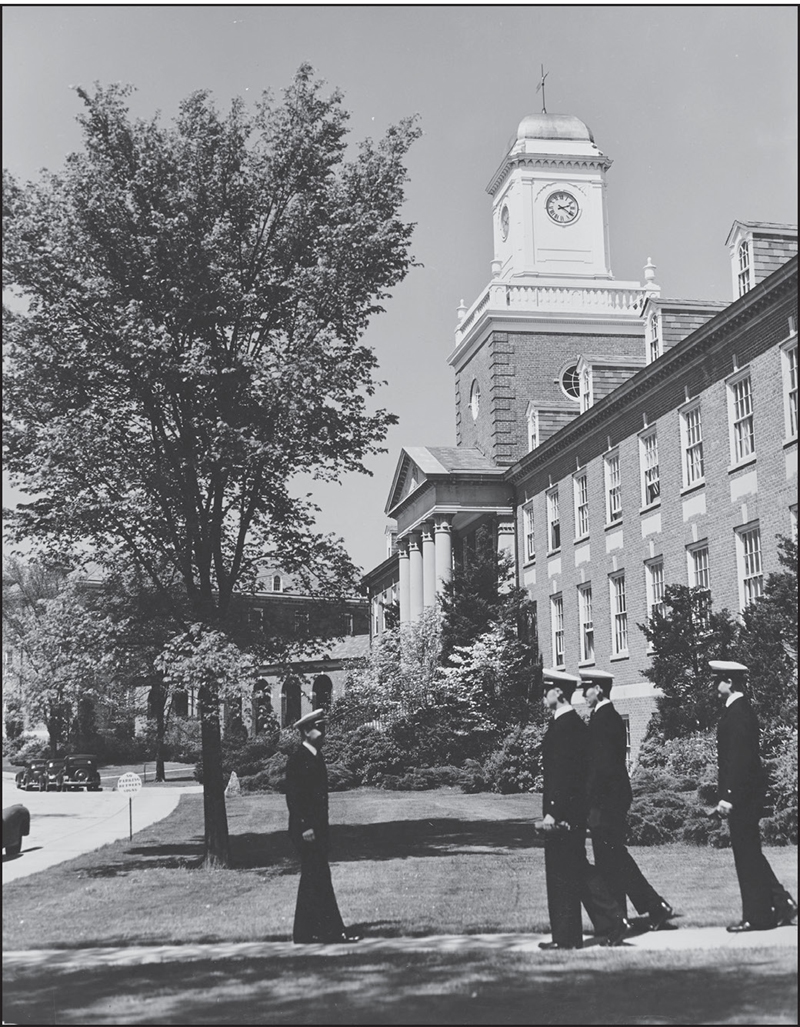
THE ACADEMY OF TODAY. As shown in this image looking north along Bear Drive, the appearance of the academy has changed little, but the officers it produces are entering a more complex world of terrorism, environmental challenges, and increasing dependence on the ocean for commerce. (1940 Tide Rips.)
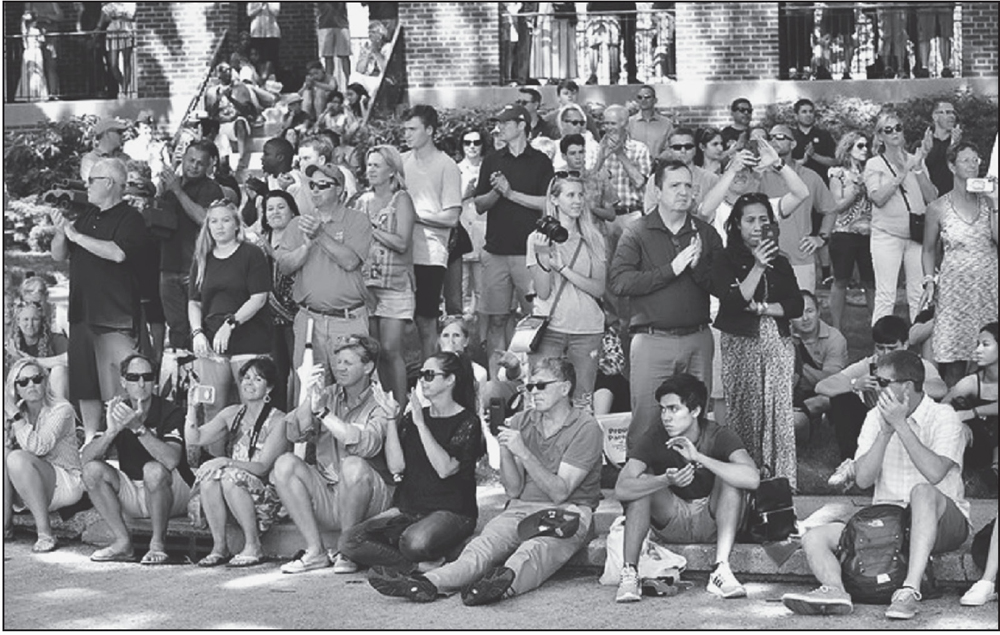
PARENTS AND FRIENDS AT THE SHOULDER BOARD CEREMONY. Many people assist cadets in preparing them to become successful Coast Guard officers. Cadets should make sure these supporters know how much their contributions to the nation’s future are appreciated. (Courtesy of Paul Duddy.)
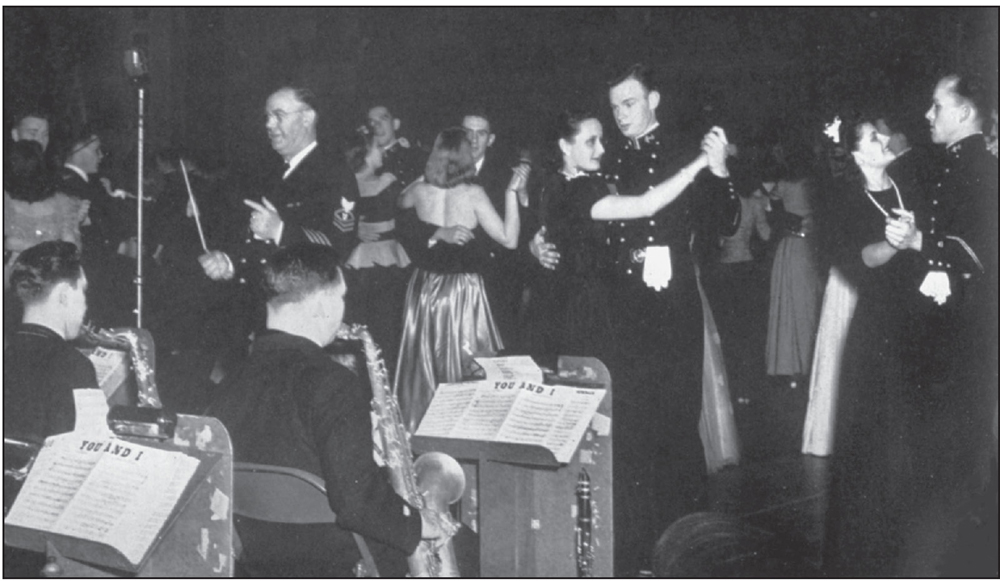
CADET FORMAL DANCE. The partners that cadets choose to accompany them in their careers will also accept a challenging life. The author and his family moved 15 times during his 30 years of active duty. It meant leaving behind many old friends and starting over at many new schools. Legendary World War II naval leader Adm. Chester Nimitz’s wife, when asked about her memories of her husband’s illustrious career, replied, “Buying and leaving garbage cans all around the world.” (1942–1943 Tide Rips.)
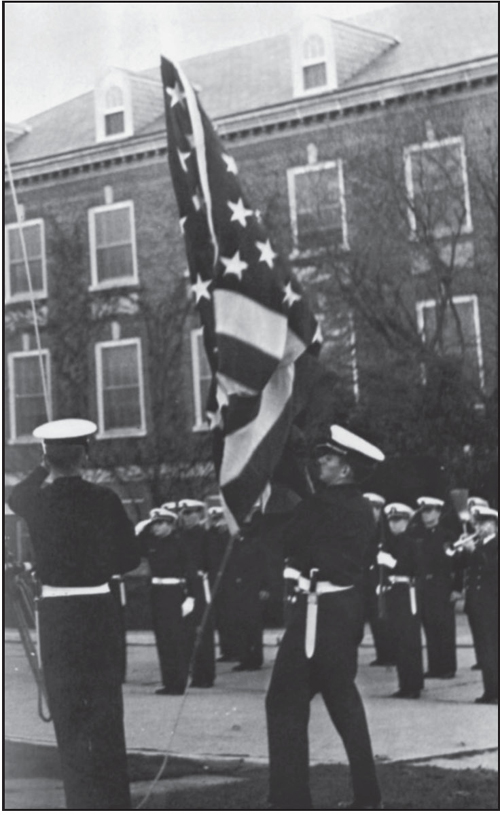
PRES. JOHN F. KENNEDY MEMORIAL FLAG CEREMONY. The shooting of President Kennedy in 1963 seemed to signal the vulnerability of the country to attacks by nontraditional means. The impact on the preparedness of graduates charged with the security of ports is considerable. (1964 Tide Rips.)
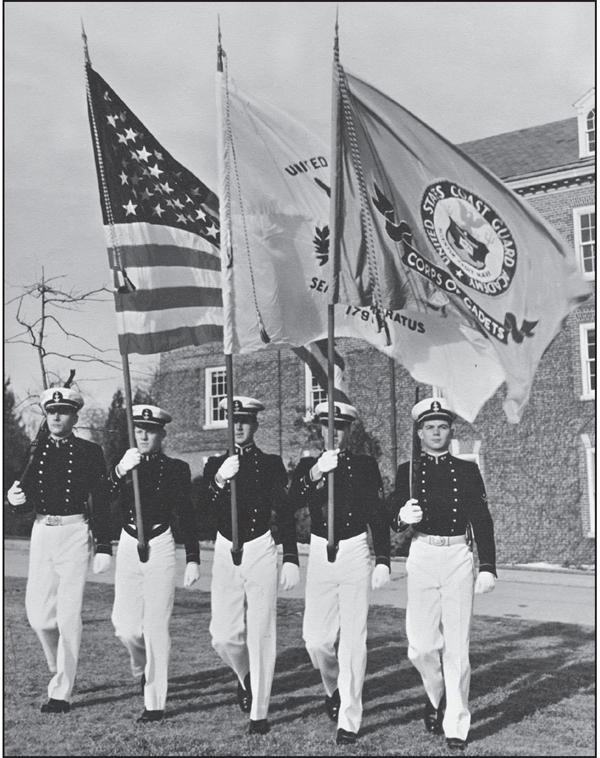
1960 COLOR GUARD. During times of uncertainty, tradition, ceremony, and symbols can be reassuring. The knowledge that many before them have gone into uncertain times can give cadets the courage to do their part. (1961 Tide Rips.)
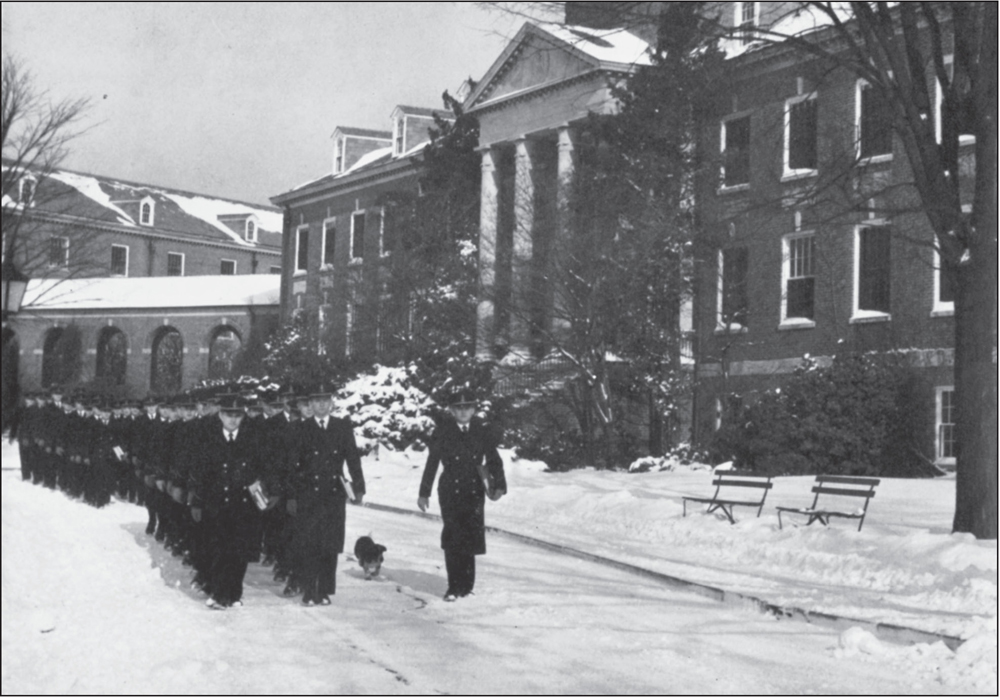
CADETS MARCHING IN SNOW. These cadets are marching into a different and challenging future. From the beginning of the Revenue Cutter Service, when it had a single mission of collecting taxes, the Coast Guard has grown to include a complex mix of 11 statutory missions that entail the protection of lives, property, and national security. (1950 Tide Rips.)
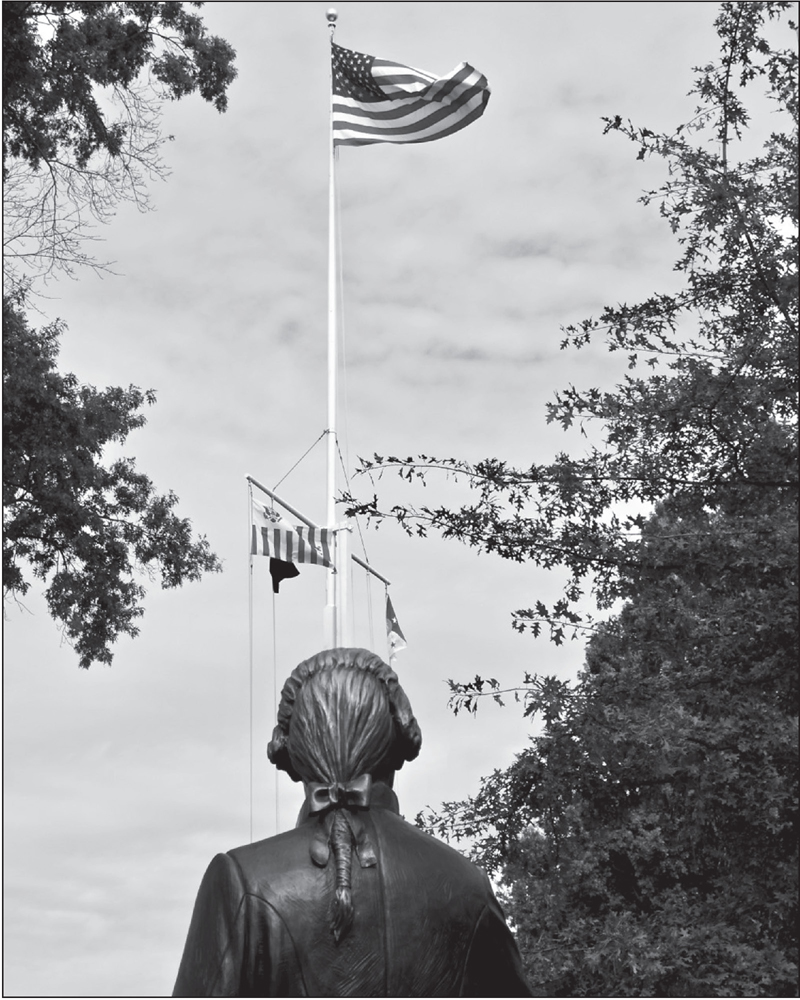
ALEXANDER HAMILTON STATUE. Alexander Hamilton looks to the flag and the future. The founder of the Coast Guard is positioned looking across the parade ground toward his mentor Pres. George Washington. (Courtesy of and photograph by Lorna Andrews.)